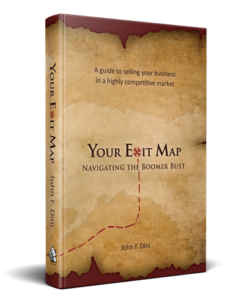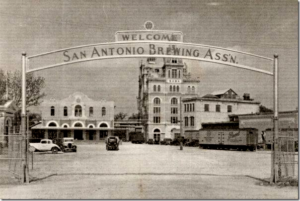“If someone offered me the right price, I’d sell in a minute!” Exit planners and business brokers hear it all the time. “Anything is for sale if the price is right!”
What is the “right” price? Of course, you can fantasize about a windfall from a buyer who has far more money than brains. Some of the fast-talking “business brokers” (the ones who get more revenue from preparing offering books than actually selling companies), will pitch their secret list of buyers in Europe and Asia who routinely overpay for businesses.
In case you didn’t know, the largest advisory firms in Europe and Asia are the same ones we have here. The same accountants, the same attorneys, the same investment bankers and the same consultants. It’s unlikely that they give their wealthy overseas clients lesser quality advice than the ones in North America.
Barring purchase by a lunatic, your business is likely to be priced around Fair Market Value; the arms-length amount that an independent buyer will pay an independent seller.
Beauty is in the Eye of the Beholder
You are the seller, and your company is what it is. Buyers, however, come in a variety of sizes and flavors. Understanding why companies have different values to differing buyers is critical if you plan to maximize your proceeds.
Here is a 2 1/2 -minute video on valuation from our website of free tools for business owners at www.YourExitMap.com.
These are the typical ranges for “fair market value.”
If you are earning less than $500,000 in total salary, profits and benefits from the business, your likely price is between 2.5 and 3.5 times the SDE (Seller’s Discretionary Earnings.) These are “Main Street” businesses; typically sold to individuals.
Once you exceed $1,000,000 in Earnings before Interest, Taxes, Depreciation and Amortization, or EBITDA (but not counting your personal salary and benefits) you are a target for professional investors. These include private equity groups and family offices. In this market, valuations between 4 and 6 times earnings are common. If your EBITDA is over $2,000,000 it could be substantially higher.
Strategic and industry buyers (who may be the same) could pay more, but those transactions are very specific to the situation. In simple terms, the right price is whatever you can get. If the acquirer has a plan to plug your business into an existing customer base and grow it substantially, earnings often become a secondary issue.
The Neutral Zone
The “neutral zone” contains those companies who earn more than $500,000 (SDE) but generate less than $1,000,000 EBITDA. This is a fairly broad range.
Let’s use an illustration. An owner takes a $400,000 salary along with another $250,000 in benefits, and shows a pre-tax profit of $700,000. Clearly that is a healthy small business. In the “Main Street” market the company could value at between $4 and $5 million.
An individual buyer would need at least 25% down ($1,000,000 cash) plus working capital, and be able to guarantee loan payments of about $500,000 a year. That’s well beyond the range of most individuals.
Yet unless this business has a unique product or intellectual property, it is likely of no interest to professional, industry or strategic buyers.
Many of these companies are choosing a staged sale to their management teams. Others choose to kick growth into a higher gear in order to reach the next stratum of buyers and valuation. Either approach will usually take at least five years.
Controlling the Right Price
Some owners are choosing both approaches. They use ownership as a management incentive to achieve growth targets. If the company makes the leap into a buyer market with higher valuations, both the owner and the management team win.
If the company doesn’t attract the target buyers, the owner still has a solid exit strategy from a more valuable company. Getting the right price requires the right plan.
“Read” my new book in 12 minutes!
 Your Exit Map, Navigating the Boomer Bust is now available on Amazon, Barnes & Noble and wherever books are sold. It was ranked the #1 new release in its category on Amazon, and is supplemented by free tools and educational materials at www.YourExitMap.com.
Your Exit Map, Navigating the Boomer Bust is now available on Amazon, Barnes & Noble and wherever books are sold. It was ranked the #1 new release in its category on Amazon, and is supplemented by free tools and educational materials at www.YourExitMap.com.
Now, we have a really cool 12 minute animated video from our friends at readitfor.me that summarizes the book, and helps you understand why it is so different from “how to” exit planning tomes. Take some time to check it out here. Thanks!
 Located next to the major north-south traffic artery from the airport to downtown, The brewery has now been transformed into what is likely the best industrial redevelopment in the nation.
Located next to the major north-south traffic artery from the airport to downtown, The brewery has now been transformed into what is likely the best industrial redevelopment in the nation. brewery equipment, largely heavy iron fixtures from the early 20th century, was stripped out, inventoried and stored. Every project in the redevelopment integrates the equipment as a centerpiece, lending a cool steampunk feel to the restaurants and public areas.
brewery equipment, largely heavy iron fixtures from the early 20th century, was stripped out, inventoried and stored. Every project in the redevelopment integrates the equipment as a centerpiece, lending a cool steampunk feel to the restaurants and public areas. On the “inland” side along Broadway and across the river, other developers have put up new apartments whose chief attraction is “within walking distance of The Pearl.” Another developer is planning a similar complex (18 acres) directly across the street.
On the “inland” side along Broadway and across the river, other developers have put up new apartments whose chief attraction is “within walking distance of The Pearl.” Another developer is planning a similar complex (18 acres) directly across the street. That is a comforting thought to business owners who choose to see their one-person strategic planning team as a competitive advantage. Like the small furry mammals that survived as the dinosaurs died out, they are adaptable. The nimble small business can react to changes in the market faster, with less bureaucracy, and with greater attention to the customer’s needs.
That is a comforting thought to business owners who choose to see their one-person strategic planning team as a competitive advantage. Like the small furry mammals that survived as the dinosaurs died out, they are adaptable. The nimble small business can react to changes in the market faster, with less bureaucracy, and with greater attention to the customer’s needs. It will absolutely be an issue if your growth rate falters during due diligence. It’s hard to go through the machinations of a transaction and pay attention to driving the company at the same time. Just be aware that taking your foot off the gas will be noticed, and accounted for.
It will absolutely be an issue if your growth rate falters during due diligence. It’s hard to go through the machinations of a transaction and pay attention to driving the company at the same time. Just be aware that taking your foot off the gas will be noticed, and accounted for.